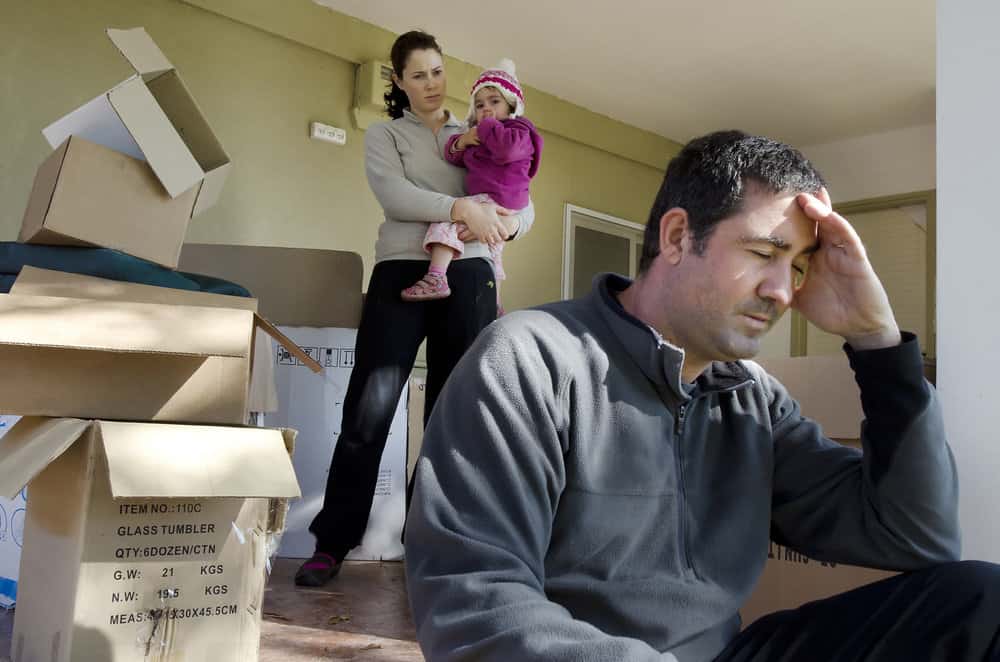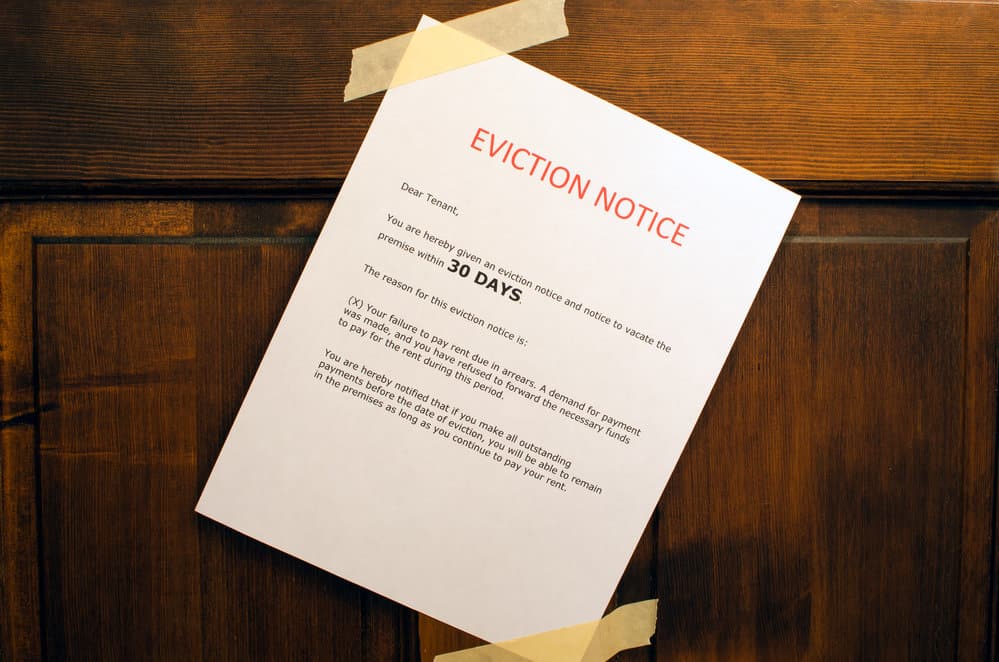Constructive eviction occurs when a landlord’s actions or inactions render a rental property uninhabitable, forcing the tenant to vacate without a formal eviction order. This legal concept acknowledges that although the landlord may not have directly evicted the tenant, their actions have indirectly made it impossible for the tenant to continue living in the property.
Landlords and tenants must understand their rights and responsibilities in such situations. Landlords must maintain a habitable living environment for their tenants, and if they fail to do so, they may be held liable for constructive eviction. On the other hand, tenants should be aware of the legal steps they can take if they find themselves in such unbearable living conditions.
Examples of constructive eviction can include unresolved issues with essential services, severe and unaddressed vermin infestations, or an unresponsive landlord who neglects urgent repairs affecting the tenant’s health and safety. If a court determines that constructive eviction has occurred, the tenant may be entitled to damages or permitted to break their lease without penalty.
What is Constructive Eviction
Constructive eviction occurs when a landlord’s actions, or failure to act, result in a tenant’s premises becoming uninhabitable, forcing the tenant to vacate the property. This can happen even without a formal eviction notice. Tenants may have a legal claim for constructive eviction if they can prove that the landlord violated the covenant of quiet enjoyment and the implied warranty of habitability, which are vital rights granted to tenants.
Elements of Constructive Eviction
There are several elements a tenant must prove to establish a case for constructive eviction. These include:
- Uninhabitable Premises: The tenant must show that the landlord’s actions, or lack thereof, caused the premises to become uninhabitable, threatening the tenant’s health or safety.
- Notice to Landlord: The tenant informed the landlord of the issue and allowed them to remedy it.
- Landlord’s Failure to Act: The landlord failed to address the issue within a reasonable time.
- Vacating the Premises: Due to these conditions, the tenant had no choice but to vacate the property.
Partial Constructive Eviction
Partial constructive eviction is a sub-category where a tenant’s use and enjoyment of the property is substantially interfered with. Still, they choose to remain on the premises. This can include situations where a part of the property becomes uninhabitable, affecting the tenant’s rights and ability to use the entirety of their rented space.
Landlord’s Obligations
A landlord has a legal duty to maintain the premises in a habitable condition, ensuring the safety and comfort of their tenants. This section will discuss the landlord’s obligations under the following sub-sections: Duty to Repair, Heat and Utilities, and Entrance and Safety.
Duty to Repair
The landlord is responsible for making necessary repairs to the premises, ensuring the property remains in good condition. This includes fixing structural issues such as a damaged roof, maintaining the paint, and addressing any other required repairs. Failure to do so could result in a tenant claiming constructive eviction due to the uninhabitable living conditions.
Heat and Utilities
The landlord must provide the necessary utilities for the premises, including heating, electricity, and gas. Ensuring proper heating is essential, as inadequate heat can make living conditions unbearable and might lead to health issues, especially during colder months. Tenants should not bear the burden of a lack of heat or utilities due to the landlord’s failure to meet their obligations.
Table 1: Utilities responsibilities
| Utility | Landlord’s responsibility |
|---|---|
| Electricity | Supplying power to the premises |
| Heating | Maintaining functioning heating systems |
| Gas | Ensuring safe gas supply and connections |
Entrance and Safety
The landlord must ensure the safety and security of their tenants by maintaining a secure entrance to the premises. This includes providing working locks and keys and addressing potential safety hazards, such as a broken stairway or insufficient lighting. Additionally, it is the landlord’s responsibility to maintain and repair any safety equipment, such as smoke detectors and fire alarms, to guarantee the well-being of the occupants.
By fulfilling these obligations, a landlord ensures tenants can enjoy their living space without fear of unsafe or uncomfortable conditions.
Tenant’s Rights
Under constructive eviction, tenants possess certain rights that come into play when a landlord fails to maintain the property, rendering it uninhabitable.
Vacating the Premises
When a tenant experiences constructive eviction, they have the right to vacate the premises within a reasonable time. This decision should be based on the severity of the issues impacting their ability to inhabit the rental property. Before vacating, the tenant needs to provide their landlord with notice, allowing them to fix the problem. Should the landlord fail to address the issue promptly, the tenant can proceed to vacate and terminate their lease.
Defense Against Eviction
Constructive eviction serves as a viable defense for tenants facing eviction lawsuits. By proving the rental property is uninhabitable due to the landlord’s negligence or failure to maintain it, the tenant can argue that they had no choice but to vacate. Documentation, such as photographs of the damaged property and records of communication with the landlord to resolve the matter, will serve as essential evidence.
Rent Abatement
Tenants experiencing constructive eviction may have a right to rent abatement, wherein they are no longer obligated to pay rent when the rental property is uninhabitable. Sometimes, tenants may even withhold rent until the landlord remedies the situation. It’s important to consult legal counsel and thoroughly research local regulations before deciding to withhold rent, as this action may come with potential legal consequences.
In summary, tenants must be aware of their rights under constructive eviction to protect themselves adequately. With clear communication, documentation, and adherence to local regulations, tenants can defend their rights and seek appropriate remedies for the uninhabitable living conditions they’ve encountered.
The Constructive Eviction Process
Constructive eviction occurs when a landlord’s actions, or lack thereof, make a property uninhabitable for the tenant, forcing them to vacate. This process involves several steps, including providing notice, filing a claim, and going through court proceedings.
Notice and Timeframe
The first step in the constructive eviction process is for the tenant to provide the landlord with a written notice detailing the issues and allowing a reasonable timeframe for resolution. The notice should specify the uninhabitable conditions and reference any applicable laws or lease provisions breached, such as failure to maintain a safe and habitable environment.
A “reasonable timeframe” typically depends on the severity of the issue and any local or state regulations. Establishing a clear deadline for the landlord to address the problems and document any communication or attempts to resolve the issue is crucial.
Filing a Claim
If the landlord fails to address the issue within the given timeframe, the tenant may pursue a legal claim for constructive eviction. This involves filing a formal lawsuit with the appropriate court, presenting evidence that the landlord’s actions or lack thereof have rendered the property uninhabitable.
Documentation is crucial at this stage, as tenants must demonstrate that they provided adequate notice, attempted to remedy the situation, and gave the landlord ample time to fix the problems. Photographs, correspondence, and witness statements can be valuable evidence when filing a claim.
Court Proceedings
Once the claim is filed, the case will proceed through the court system. The tenant and landlord will be able to present their arguments and evidence to a judge, who then determines whether a constructive eviction has occurred. If the judge favors the tenant, they may be entitled to damages, such as reimbursement for moving expenses and any increased rent in their new living situation.
Sometimes, a court order may be issued to compel the landlord to correct the issues causing the constructive eviction. However, this outcome is generally less common, as the tenant has often already vacated the property by the time the case reaches this stage.
Remedies and Damages
In cases of constructive eviction, tenants have different options to seek remedies and damages. These remedies aim to compensate the tenants for the loss they experienced due to the uninhabitable rental property. Some common remedies include rent reduction and compensation for moving expenses.
Rent Reduction
One remedy a tenant may pursue is rent reduction or rent abatement. Rent reduction allows the tenant to pay a lower rent amount, considering the inhabitable conditions of the property:
- A tenant may negotiate with the landlord for a reduced rent as compensation for the uninhabitable conditions.
- If they cannot reach an agreement, the tenant may sue the landlord for a rent reduction in court.
An attorney can help navigate the legal complexities of seeking rent reduction as a remedy.
Moving Expenses
When a tenant experiences constructive eviction, they may also seek compensation for moving expenses:
- These expenses could include hiring movers, renting a moving truck, and any other costs associated with the relocation.
- In some cases, if a tenant finds a new rental property with a higher rent, they may also seek the difference in rent for a certain period.
Tenants must document their moving expenses and losses to present a solid case for compensation.
Dealing with Uninhabitable Conditions
When tenants face uninhabitable conditions in their rented properties, they must promptly and effectively resolve these issues.
Reporting to Authorities
One of the primary steps in addressing uninhabitable conditions is reporting them to the appropriate authorities. Depending on the particular issue, tenants may need to contact various departments, such as the building inspector, health department, or police department. These agencies can assess the situation and help enforce the legal requirements for suitable living conditions.
For instance, the health department may intervene if there is a lack of safe drinking water or inadequate sanitation facilities. On the other hand, structural issues or safety concerns may fall under the jurisdiction of the building inspector. It is crucial to understand which department is responsible for each area of concern and report the issues accordingly.
Repairs and Maintenance
Under some circumstances, tenants may take matters into their own hands and deal with necessary repairs. This action could involve hiring a private, professional contractor to address the grounds and any maintenance issues they’ve discovered.
- Building repairs: Tenants can engage a contractor to evaluate the structural issues and perform the required repairs to make the property habitable.
- Plumbing and electrical work: Professional contractors can also handle plumbing or electrical issues that arise, ensuring they are resolved correctly and safely.
However, it’s essential to note that tenants should carefully review their rental agreements and consult their local laws before performing any repairs on their own, as this might not always be allowed.
Tenants may seek legal recourse when all else fails, and the landlord does not address the uninhabitable conditions. Small claims court can be an option for tenants to request compensation for their financial losses caused by the landlord’s negligence.
Preventing Constructive Eviction
Preventing constructive eviction is essential for landlords and tenants to maintain a positive rental housing experience. By understanding and fulfilling their respective responsibilities, both parties can ensure a smooth and legal lease process.
Landlord’s Responsibilities
Landlords play a crucial role in preventing constructive eviction. They must ensure the rental unit remains habitable by promptly addressing necessary repairs and complying with applicable rental housing regulations. Some primary responsibilities include:
- Maintaining a clean and safe environment in common areas.
- Providing functional plumbing, heating, and electrical systems.
- Ensuring compliance with building and health codes.
- Respecting the tenant’s right to quiet enjoyment and not interfering with their use of the rental unit.
By fulfilling these obligations, landlords reduce the risk of creating a situation where a tenant may rightfully claim constructive eviction.
Tenant’s Responsibilities
Tenants also have obligations to prevent constructive eviction. Their responsibilities primarily involve communication and compliance with the lease terms. Some key responsibilities include:
- Paying rent on time as per the lease agreement.
- Reporting any necessary repairs or maintenance issues to the landlord promptly.
- Not causing damage to the rental property or violating local housing ordinances.
- Cooperating with the landlord when repairs or maintenance need to be carried out.
By upholding their end of the lease agreement, tenants can maintain a functional rental unit and avoid situations that could lead to constructive eviction.
Relevant Laws and Jurisdictions
Constructive eviction occurs when a tenant is forced to vacate a property due to unfavorable living conditions. This can result from a landlord’s failure to maintain a safe and suitable environment or other factors that hinder the tenant’s beneficial enjoyment of the premises. Laws governing constructive eviction differ from jurisdiction to jurisdiction, but certain key aspects are consistent.
Real property laws play a significant role in shaping the legal framework for constructive eviction. Generally, a lease or rental agreement establishes the landlord’s and tenant’s rights and responsibilities. A landlord’s failure to meet those obligations may result in constructive eviction.
One common ground for constructive eviction is the failure to provide a safe and habitable living environment. This may include unsuitable heating, hazardous electrical systems, or unsafe structural conditions. Tenants may also claim constructive eviction when they can no longer occupy the premises due to persistent noise or other disturbances that hinder their peaceful enjoyment of the property.
It is important to note that not every jurisdiction recognizes the concept of constructive eviction and the legal criteria for establishing such a claim may differ accordingly. Some jurisdictions require tenants to vacate the premises before filing a legal action for constructive eviction, while others permit tenants to remain in possession during legal proceedings. Moreover, the process and timeline for filing such claims may also vary.
In addition to local real property laws, jurisdictions may have specific legal eviction procedures that must be adhered to by landlords. Failure to follow these procedures may lead to a claim of constructive eviction. Some of these procedures may involve:
- Providing adequate notice of eviction
- Following proper judicial or administrative procedures
- Ensuring compliance with any applicable rent control or stabilization laws
The precise laws and jurisdictions are relevant to constructive eviction will depend on the property’s location and the specific circumstances surrounding the case. Tenants and landlords must know the applicable regulations to avoid disputes and potential legal repercussions.
Frequently Asked Questions
What is constructive eviction?
Constructive eviction occurs when a landlord’s actions or negligence make a rental property uninhabitable, forcing the tenant to leave the property before the lease term ends. Examples include failing to make necessary repairs, not addressing safety hazards, or interfering with the tenant’s quiet enjoyment of the property.
What are the conditions that make a property uninhabitable?
Conditions that render a property uninhabitable can include, but are not limited to, the following:
- Lack of essential utilities like heat, water, and electricity
- Serious damage to the structure or foundation
- Mold or pest infestations
- Unsanitary conditions, such as sewage leaks
How can a tenant prove constructive eviction?
To prove constructive eviction, a tenant should gather evidence supporting their claim, such as:
- Documentation of the uninhabitable conditions
- Proof of notifying the landlord about the issues
- Record of the landlord’s failure to address the problems
Consulting with an attorney can guide the legal steps and build a strong case for constructive eviction.
What remedies are available if a tenant wins a constructive eviction claim?
Suppose a tenant wins a constructive eviction claim. In that case, they may be entitled to compensation for moving expenses, alternative housing costs, and the difference in rent if the new place is more expensive than the original property. Sometimes, a tenant may also be released from their lease without penalty and recover attorney fees and court costs.



